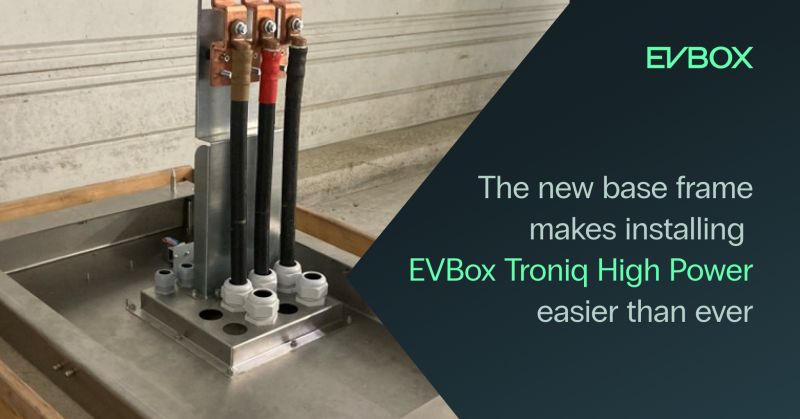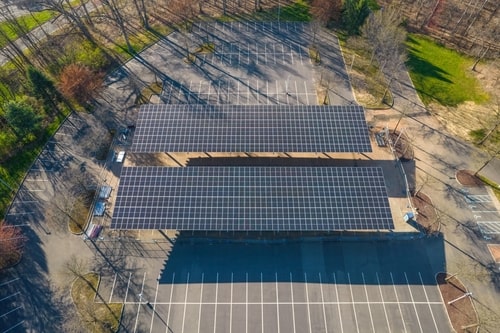
When thinking about installing DC fast charging stations on your site, careful consideration must be given to designing the site. Many businesses overlook how much the layout, construction, and decoration of a charging site can impact its potential success.
To help you design your DC charging site, we’ve identified six key things to take into consideration:
- Plan for the long term
- Locate the optimal charger location
- Get familiar with installation requirements
- Consider the customer experience
- Stand out
- Develop a fitting revenue strategy
EV charging sites can offer more than just charging
In the early days of public EV charging, charging sites were often designed without much thought given to the interaction between the driver and charging station. Early adopters were forgiving, as the presence of a public charger tended to be enough on its own, to appease EV drivers’ needs.
Today, however, the EV market is rapidly expanding, and as such, the necessity for quality site design is greater than ever and will only increase in the near future.
The International Energy Agency expects electric vehicles to ultimately make up as much as 60% of global car sales by 2030. This exponential growth is coupled with the rising demand from EV drivers for DC fast charging.
Evidently, the way a DC fast charging site is designed will play a crucial role in customer satisfaction, loyalty, and spending. Yet, site design for DC fast charging affects an even wider variety of benefits. It also plays a pivotal role in the profitability of a project and its capacity to adapt to changing demand and technology.
This article explores the concept of site design as well as 6 key things you can consider when designing your own DC fast charging location.

What is site design?
Site design for EV charging means figuring out where and how you can set up your charging stations. This planning is part of the bigger picture of how different things are arranged. Think of it as putting together different puzzle pieces to create the picture you want to see.
Site design covers all aspects of your DC fast charging sites’ layout, from the design aspects based on the spatial, electrical, and financial particularities, the aesthetic considerations of signage, branding, and even the architecture, to customer experience and cross-selling opportunities.
The benefits of site design
Before we get to the core of the article, let us take a moment to consider why it is so important to incorporate site design into your DC fast charging station planning process.
Benefit 1) Minimizing investment capital
If carefully conducted, site design can save the investor potentially large amounts of start-up capital. Site design considers the costs of connecting your DC chargers to the grid. An effective design also seeks to make the most of existing landscaping, topography, and access routes; helping you to avoid unnecessary expenses.
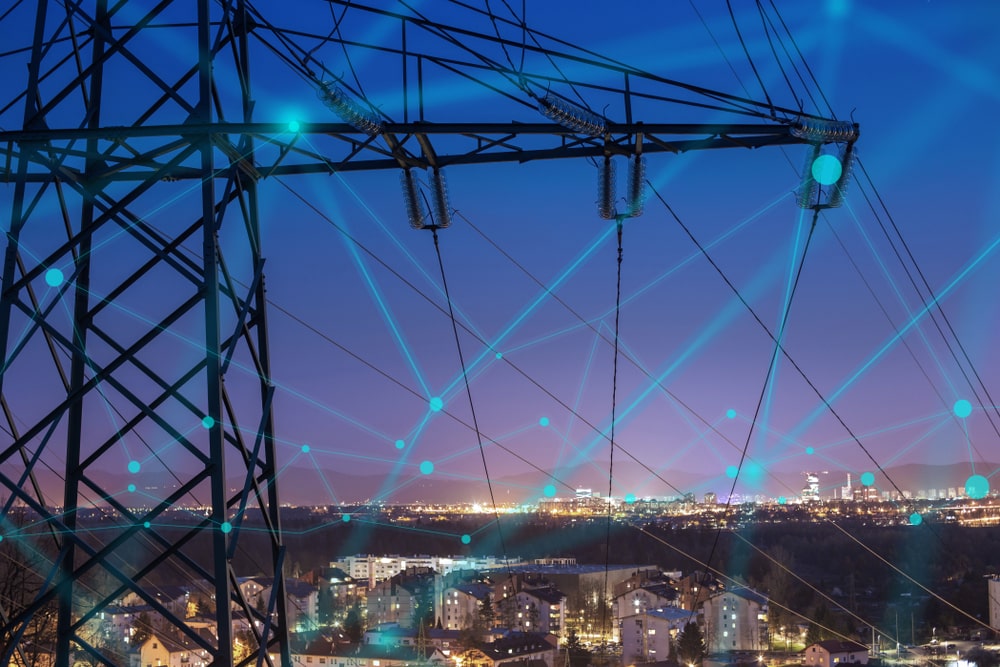
Benefit 2) Maximizing customer spend
Site design extends beyond the technical aspects of EV charging; it's also about enhancing the customer experience. To clarify, let’s take a non-EV charging example. Think about IKEA, arguably the world’s largest furniture retailer, which has one of the most distinct and memorable site designs around. Its showrooms are deliberately designed to make the customer feel comfortable and connected whilst walking through, whilst bakeries near the checkout tills subtly link the payment process in your brain with the gratifying smell of fresh cinnamon rolls.

The design boss at IKEA successfully married the customer’s desire for an enjoyable shopping experience with the finance department’s desire for increased customer spending. Whilst you might not go to quite the same lengths as the Swedes, this example hopefully illuminates the extraordinary potential of site design for maximizing customer spending, while customers are charging their car at your site. There are many different services you could offer, or products you could sell to make the experience more enjoyable for your customers (and more profitable for your business).
Benefit 3) Fostering customer loyalty
An effective fast charging site design helps ensure that the end-user’s experience is as smooth and positive as possible. For example, accessibility, signage, lighting, or additional customer services.
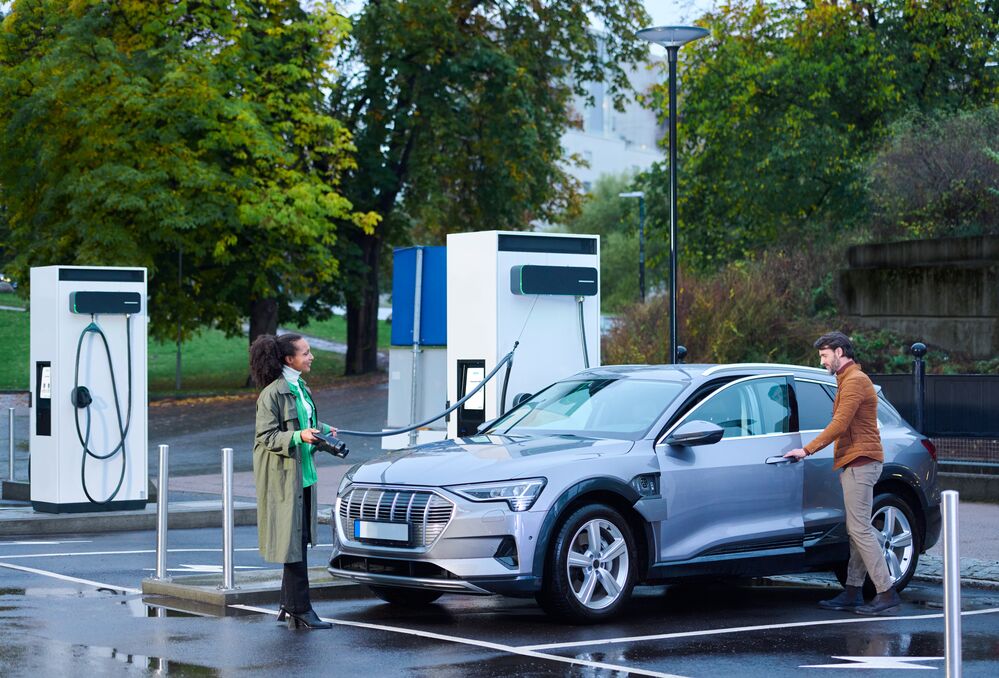
By establishing a clear link between site design and the customer’s experience, it is possible to see a value return in the form of increased customer loyalty. Whilst the DC fast charging infrastructure market may still be in its infancy, soon it shall see saturation, at which point customer loyalty could prove the difference between failure and success.
Benefit 4) Preparing for the future
Technologies change, markets fluctuate, and in the case of EVs, demand is growing – growing fast. Site design conducted today must make concessions for the sake of future expansion.
By designing a site with room for additional charging stations and increasing customer numbers, you safeguard yourself for a potentially lucrative future.
As Linda Grave, CEO and Founder of EV Driver, said in one of our REVOLUTION podcast episodes: “If you’re building for today, you're kind of already behind.”
How to design a DC fast charging site: 6 key considerations
There are different ways to fold DC fast charging into your business, whether that be as a popular destination that offers fast charging to customers using its parking lot, or a new enterprise scouting for convenient en-route DC station locations. 
The considerations for site design discussed below may not apply in every situation but are worth exploring regardless of the type of DC fast charging service you plan to provide.
Consideration 1) Plan for the long term
The global EV charging infrastructure industry was valued at USD$19.67 billion in 2022. This impressive market worth, however, is but at the tail of its projected S-curve rise, and it is estimated that the industry shall enjoy a CAGR of 25.5% between 2023 and 2030, creating a future worth of around $100 billion.
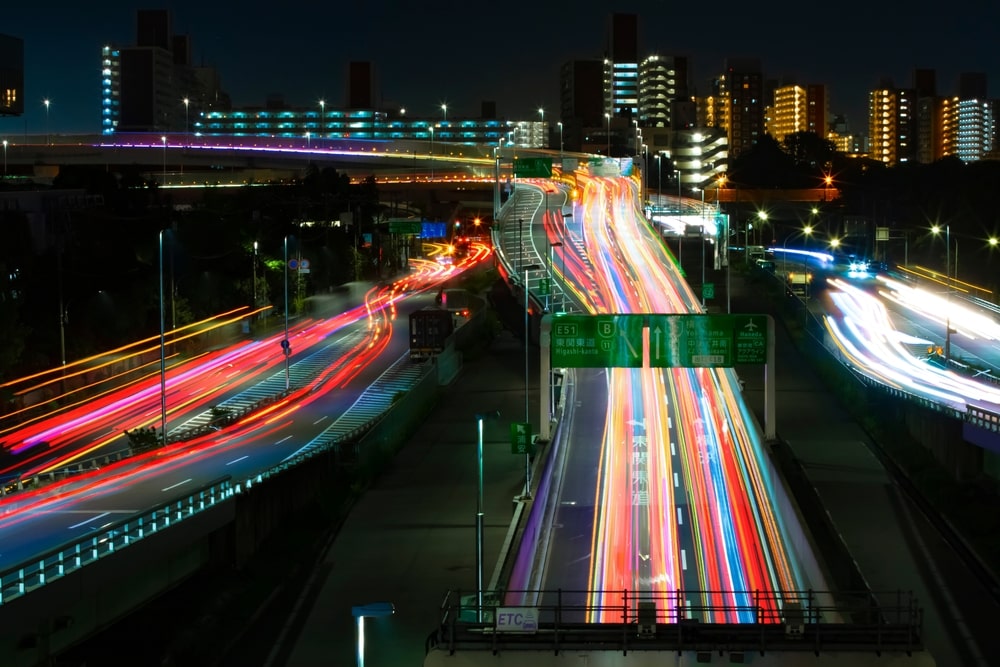
This growth is driven by the adoption of EVs, which in turn drives the demand for a comprehensive public fast charging network.
As such, effective site design will have to incorporate a variety of future-planning measures if it wishes to remain relevant and capable of meeting demand years down the line. Doing so now may require more investment capital but will likely save the investor money in the long term.
Futureproofing site design tends to center around the electrical connection of the site to the grid, and can include elements like:
- Build extra electrical capacity into the site to accommodate future charging stations.
- Shorten electrical pathways by installing sub-panels where possible
- Ensure that the conduit between your main electrical panel and DC stations is oversized, again to accommodate additional stations in the future
- Install junction boxes toward the end of charging station rows; doing so makes it easier to wire future stations
Consideration 2) Charging station placement
Where you choose to place your chargers on site, is one of the fundamental aspects of DC site design and will likely occupy the majority of your consideration process. Here, we break it down into its various components.
Deciding on the number of charge stations to install
You first want to decide on the number of fast charging stations to install, at least at present (see above). When determining this number, you’ll likely want to research EV adoption rates in your area and expected charger use and consider the balancing of cost and budget, as well as available space.
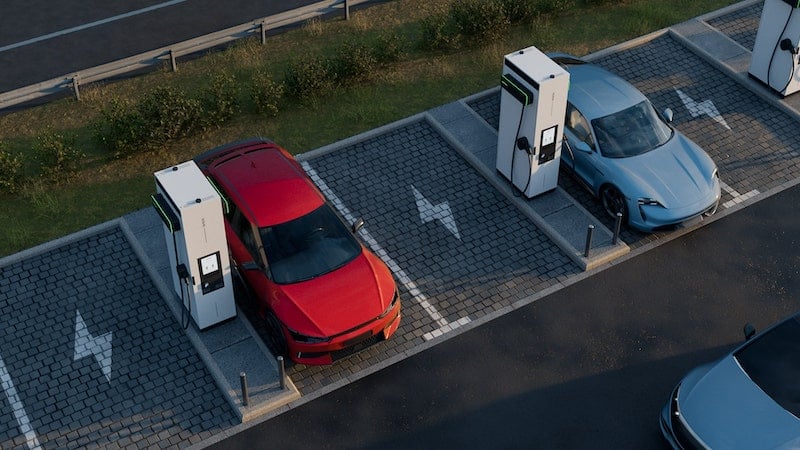
Balancing proximity to grid infrastructure with customer convenience
As a rule of thumb, the closer your DC fast charging stations are to existing electrical grid infrastructure (including the nearest substation and electrical panel), the less it will cost to connect the two.
However, the point on site closest to grid infrastructure may not necessarily be the most accessible nor convenient point for charging stations from the customer’s perspective – and as we’ve already discussed, customer experience informs customer loyalty. EV drivers may want to charge at restaurants, workplaces, or hotels; however, these places may not necessarily be close to the grid infrastructure.

As such, you can find other ways to balance the costs of your grid connection with customer convenience, finding a point between minimizing installation costs and maximizing customer numbers.
Considering conduit layout
DC fast charging stations are large units that require an extensive amount of cabling to be installed underground. You should carefully consider the layout of your chargers with the subfloor layout of conduits in mind. Different charger positions and layouts will necessitate different lengths of cabling and different numbers of conduit trenches to be dug. The more efficient this underground network, the less it will cost to install and the easier it will be to expand.
Cellular connectivity and mobile phone signal
Having reliable and consistent internet access can be important for customers during their charging sessions. EV-driving customers want to use their phone while waiting for their car to be charged, might use their phone to find the charging station, and frequently opt to pay for their charging sessions using their phones.

We recommend measuring cell signal levels across your plot of land to identify both blind spots and the spots that receive the strongest cellular data connection. You can then factor the findings into your plans for fast charging layout, to enhance the customer’s experience.
Avoiding obstacles
You must also take into consideration the various obstacles that might be in the way of optimal charger positioning.
For example, it is inadvisable to place charging stations near or beneath trees, where sap, falling leaves, and bird droppings are liable to dirty both the charging station and your customers’ cars.
Similarly, before driving a charge point's earth electrode into the ground, it's crucial to be aware of the presence of buried power lines and drainage pipes. This awareness is essential to avoid potential damage to these underground networks.
Parking bay layout
Finally, when considering the placement of your DC fast chargers, you should think about how to lay out parking bays alongside them. Alternatively, of course, if your parking bays are already defined, then their layout must instead dictate the placement of chargers.
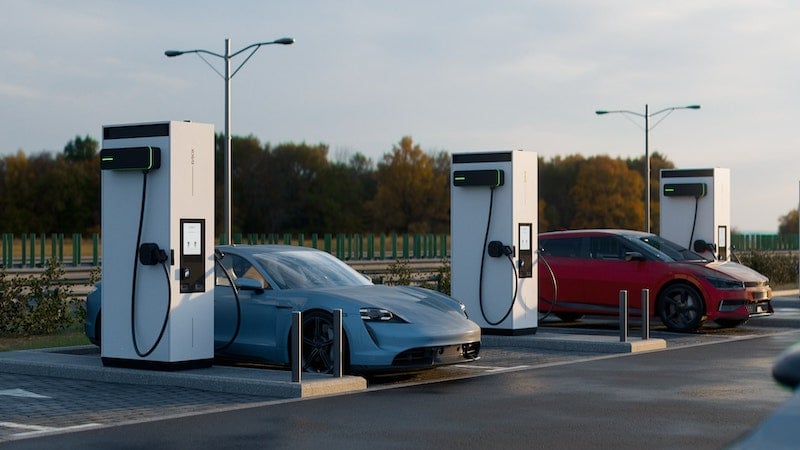
The optimal layout for parking bays at DC fast charging stations is perpendicular stall parking, allowing drivers to park conveniently, regardless of the location of their vehicle's charging port.
Parking bay layout planning also provides a timely opportunity to consider the dimensions of your chargers, to ensure each parking bay is large enough to make the customer’s charging session comfortable and accessible.
Consideration 3) Charging station installation
One of the more technical sides of DC fast charging site design is the preparation of the site for the charging station installation.
Concrete
Not every DC charging station is the same, and depending on which make or model you opt to install, the requirements for site preparation can differ. For example, you might need to install it on top of a concrete surface.
Drainage
The best DC fast charging units available are comprehensively climate-tested and impact-proof, meaning that they can be installed on a wider variety of sites. However, regardless of the durability and weather resistance of your chargers, it is understandably important to mitigate the risk of them flooding. You can do so by designing your site with adequate drainage and runoff for rainwater (in the opposite direction to the charge stations).
Pouring the charge-station anchor
Typically, one of the strongest means of anchoring your charge stations to your site is to pour a new concrete pad or to drill into an existing one. Concrete is a strong and durable, weatherproof material that lends itself well to charge point installation. The anchor pad for your charge station should be as smooth and sturdy as possible.
Clearances
When designing clearance space around your charge stations, airflow is as important to the station’s health as accessibility is to customer satisfaction and EV adoption. DC stations emit waste heat whilst operating, and so require enough clearance space to allow for a constant and fresh ambient airflow around them. Reduced airflow may reduce charger performance.
Consideration 4) Customer accessibility and the customer experience
We now move on to the portion of this article that deals directly with site design from a customer convenience standpoint. The easier, more accessible, and more enjoyable your fast charging service is to engage with, the more likely your customers are to return, spend longer on-site, and eventually become loyal patrons.
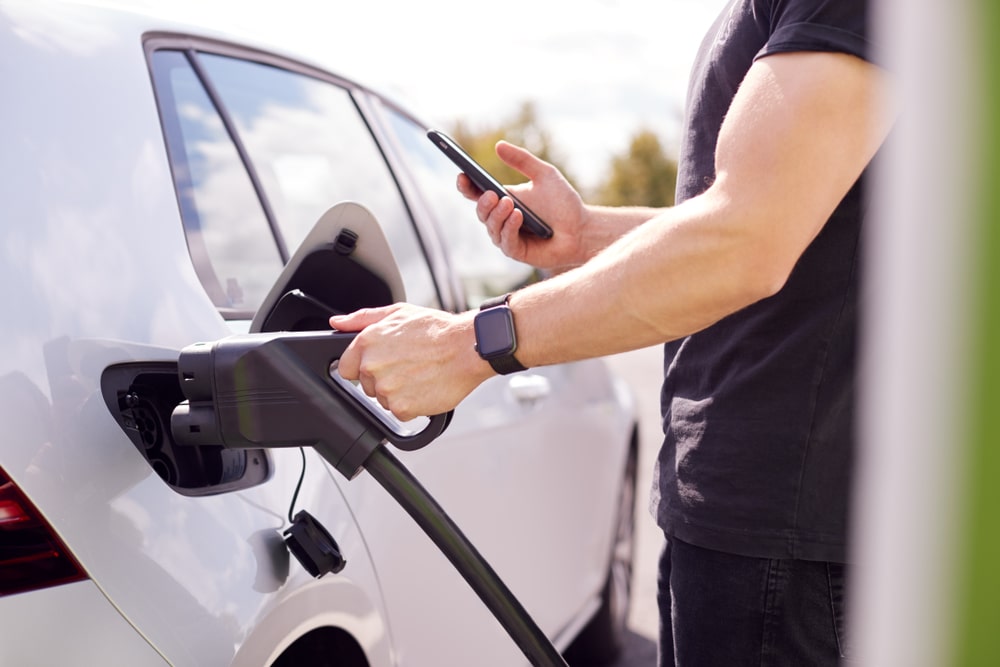
Customer accessibility
Your fast charging site should be designed with differently-abled customers in mind. Disabilities can take many different forms and are not always obvious. Whilst your site should most definitely accommodate wheelchair users – one UK study found that 61% of wheelchair-using drivers would go electric if charging infrastructure was more accessible – consider also how to adapt your charging station for a range of different abilities.
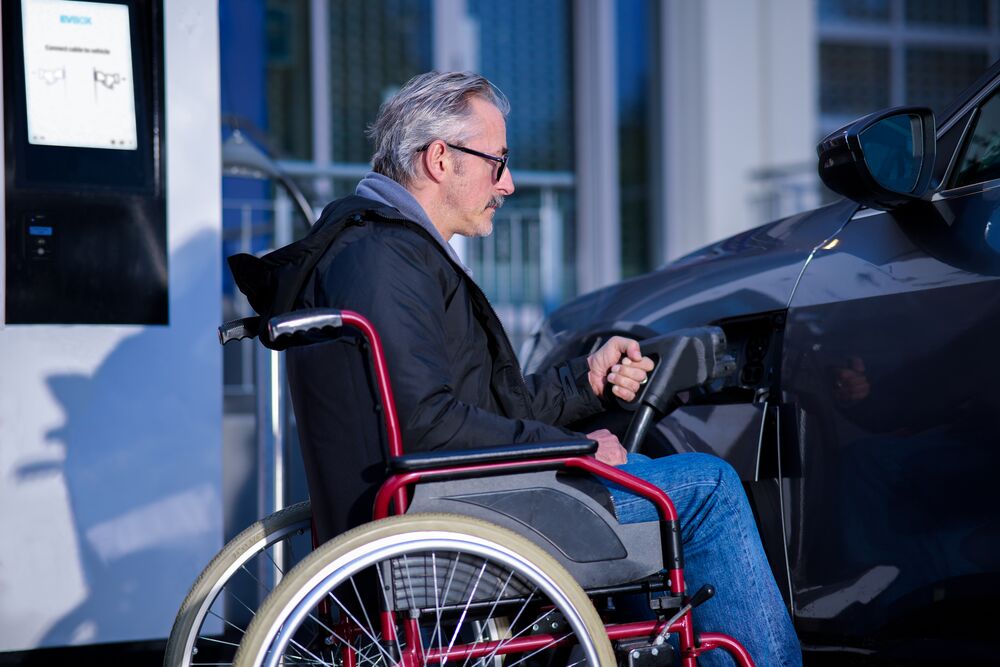
Vehicle accessibility
It’s also worth considering accessibility from a vehicle perspective when designing a fast charging station or location. An increasing number of heavy-duty EVs are hitting the road already, and this number is expected to increase in the coming years. Though it may not suit every DC fast charging site, you could incorporate charging stations designed for bigger vehicles into your plans.
Customer experience
Think about how your customers will interact with your site, how you would want to if you were a customer, and factor this into your site design. Consider what the most convenient, safe, and accessible routes will be for customers to move between charging stations, rest areas, kiosks, and other buildings on-site.
Providing shelter
Customers should be sheltered from the elements when using your DC fast charging stations, which means, at the very least, a roofed area to protect them from rain, snow, and hale.
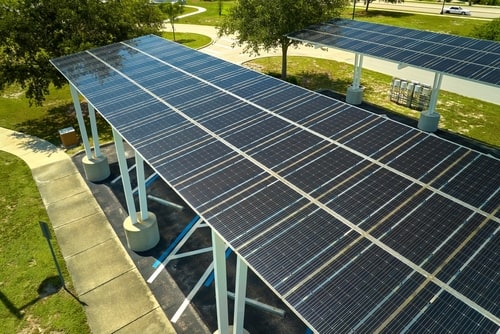
Consideration 5) Signage, branding, lighting
To facilitate a positive customer experience, your charging stations should be easy to find and safe to use 24/7, while your branding should stay stuck in the minds of your customers long after their charge sessions have ended. For this, you need to design a site with quality signage, branding, and lighting.
Signage
Signage is all about making your chargers easily discoverable and identifiable to the customer – especially if they are available at only a select few parking bays in your business’s parking lot, rather than under a forecourt roof as at a highway charge station, for example.
 Quality signage begins with map apps that customers use to find your location. Once they're nearby, your signage should guide them from the road to the nearest available charging station. From there, the signage becomes instructional, providing clear and concise guidance through the charging process.
Quality signage begins with map apps that customers use to find your location. Once they're nearby, your signage should guide them from the road to the nearest available charging station. From there, the signage becomes instructional, providing clear and concise guidance through the charging process.
You can also use signage at your charge stations to inform customers of your other offerings, including the facilities they can use while on-site.
Branding
When a strong brand identity is combined with a positive customer experience, the branding is more likely to stick in a customer’s mind. The more branding sticks in a customer’s mind, the more likely it is that your brand will be the one they think of next time they’re in need of public fast charging. Make sure to incorporate your company’s branding into your site design, including your logo(s), colors, slogan(s), and name.
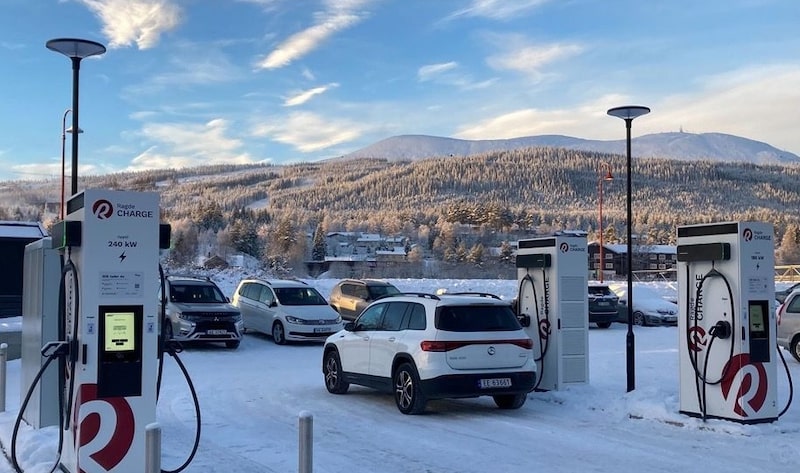
Lighting
DC fast chargers will be used year-round both during the day and night. To provide a safe and pleasant charging experience after sunset, make sure to incorporate adequate lighting into your site design.
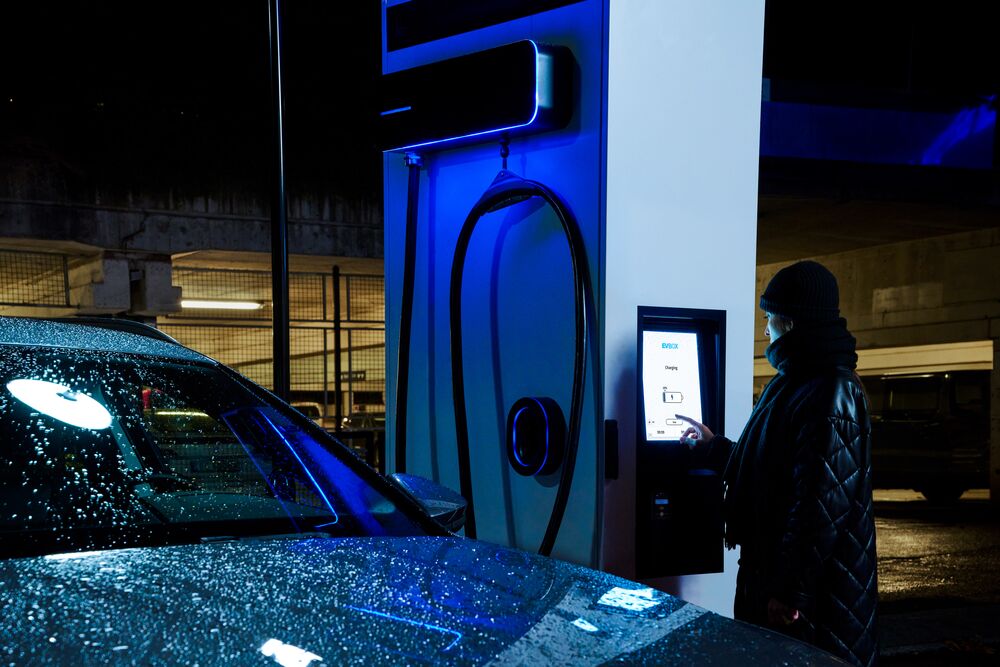
Consideration 6) Additional revenue streams & opportunities for customer recreation and relaxation
Finally, site design for a DC fast-charging location should also factor in additional revenue streams and the range of services offered to customers. For a more in-depth exploration of revenue streams in DC charging, you can visit our blog. Now, let's briefly explore a few examples of on-site services you may consider incorporating into your site design.
Additional revenue streams:
- Retail stores
- Cafés and restaurants
- Beauty salons
- Facilities for car washing and vacuum cleaning (i.e., valet services)
Free services that you can offer customers to improve their experience:
- Toilets and baby-changing facilities
- Rest areas
- Picnic areas
- Areas designed for customers to top up windscreen washer fluid, check tire pressure, and top up if necessary
- A cleaning station for windscreen, wing mirrors, headlights, and hands
- Public telephones and/or Wi-Fi

Conclusion: Recapping site design for DC fast charging stations
The demand for DC fast chargers is growing in tandem with the booming market for EVs, and as such now is a lucrative time to enter the industry. Many businesses can get involved in DC fast charging and benefit from offering the service to customers (both current and future).
By balancing technical logistics and cost with customer convenience, accessibility, and experience, you can design a site that meets demands and exceeds expectations.
To learn more about investing in DC fast charging for EVs today and tomorrow, delve deeper into our blog.
Related articles
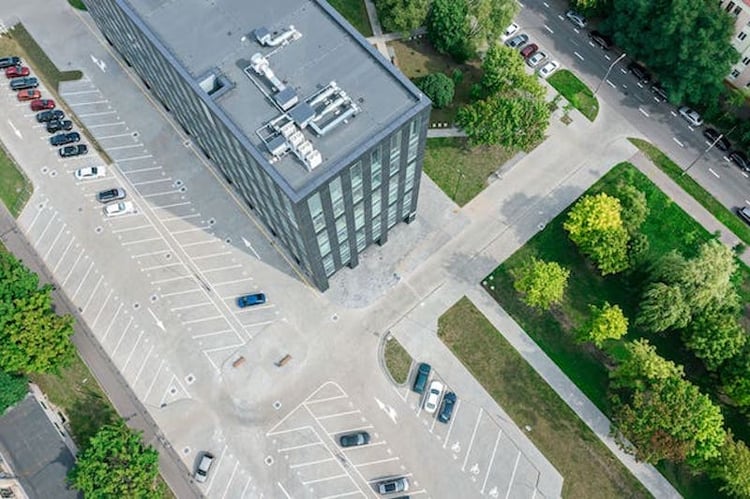
EV charging load management and the importance of cluster load balancing
Electric vehicle (EV) charging stations can add a substantial load onto your building’s power supply, often requiring...
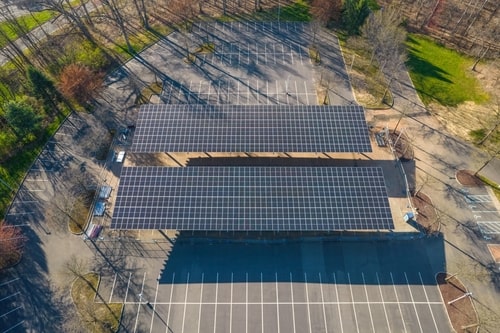
How to design a DC fast charging site
When thinking about installing DC fast charging stations on your site, careful consideration must be given to designing...
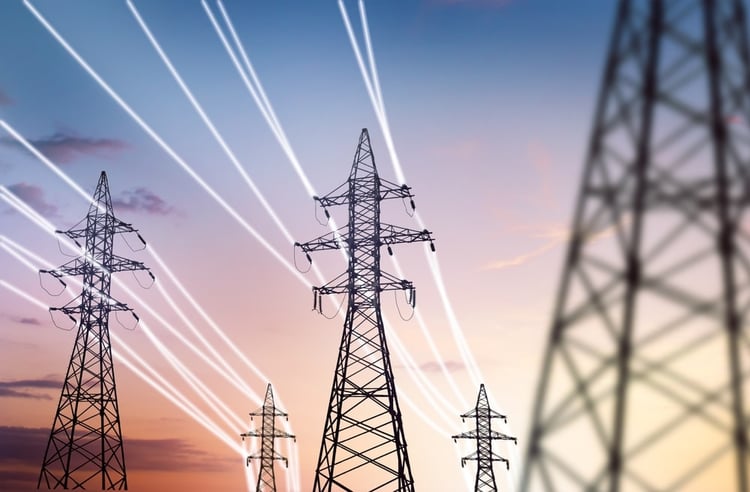
Grid connections for DC fast charging stations explained
The electrical grid is a large and established network delivering electricity from producers to consumers, and...

